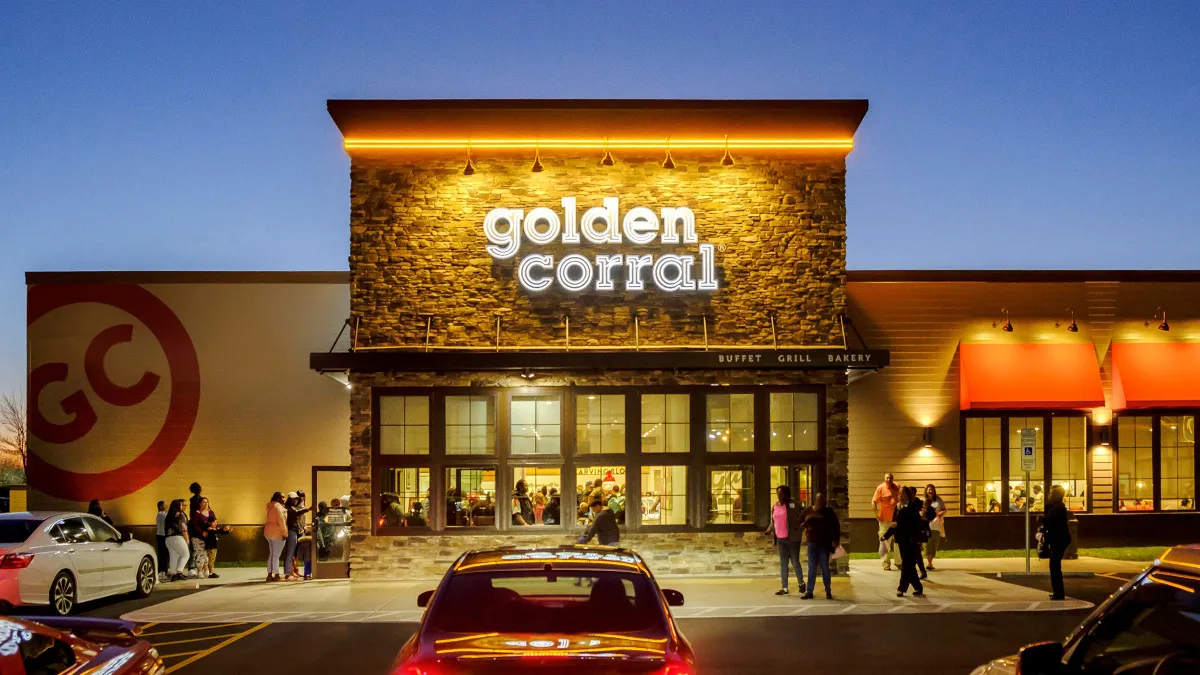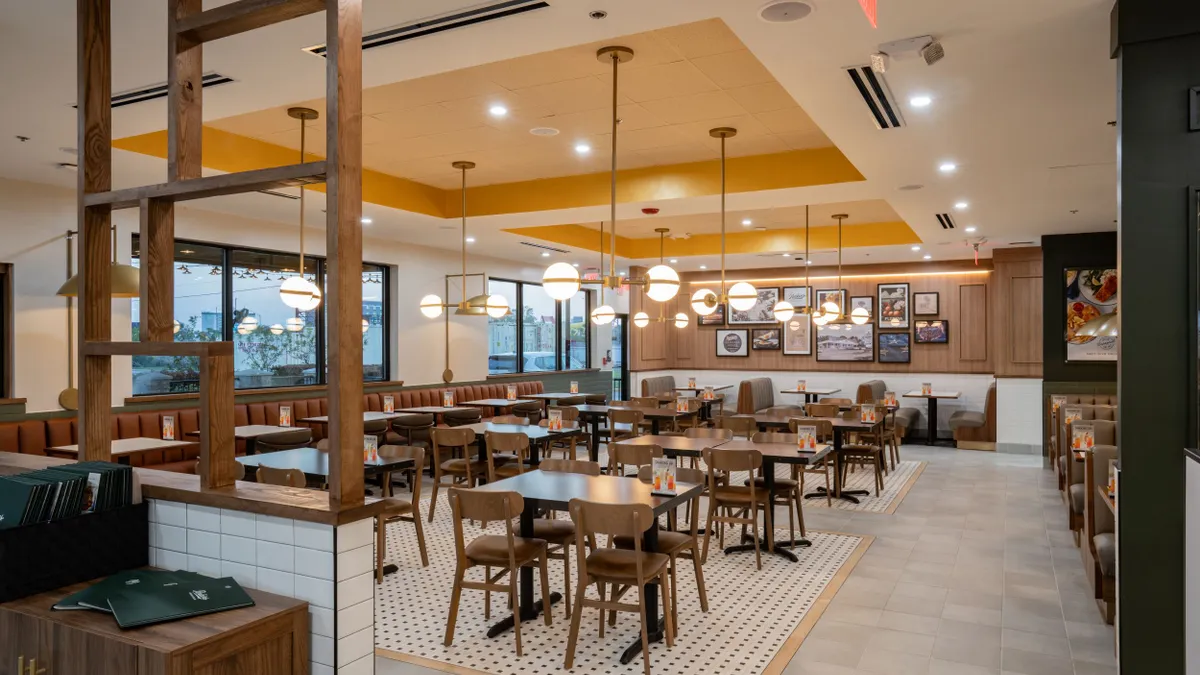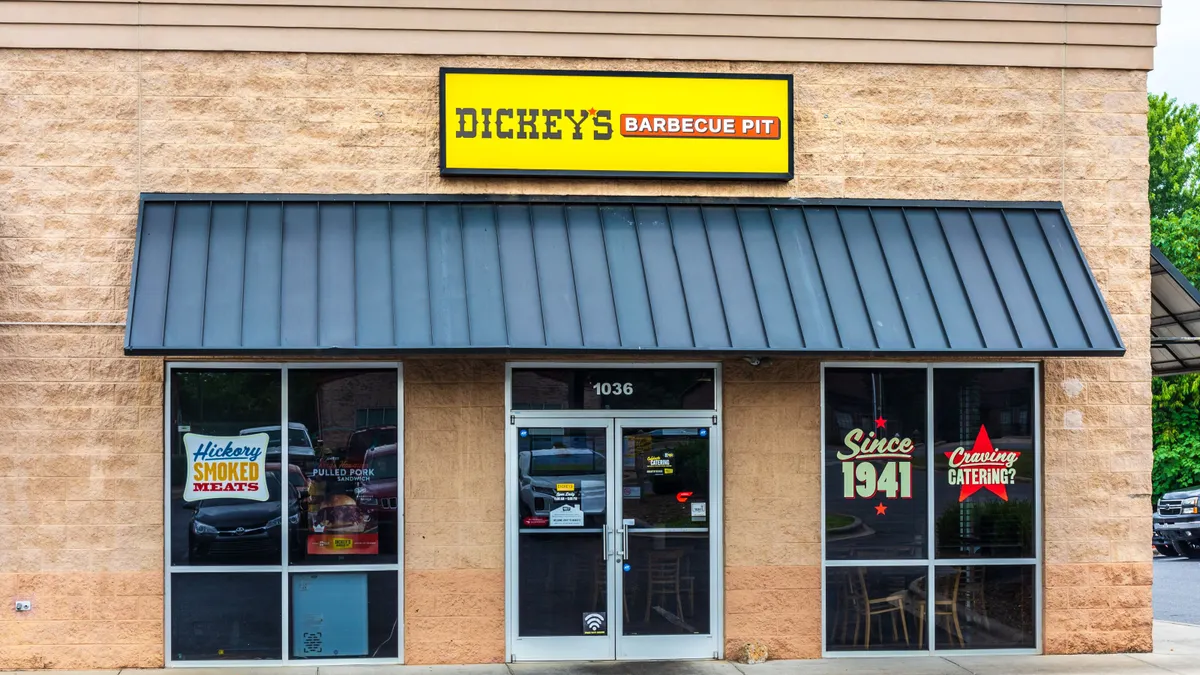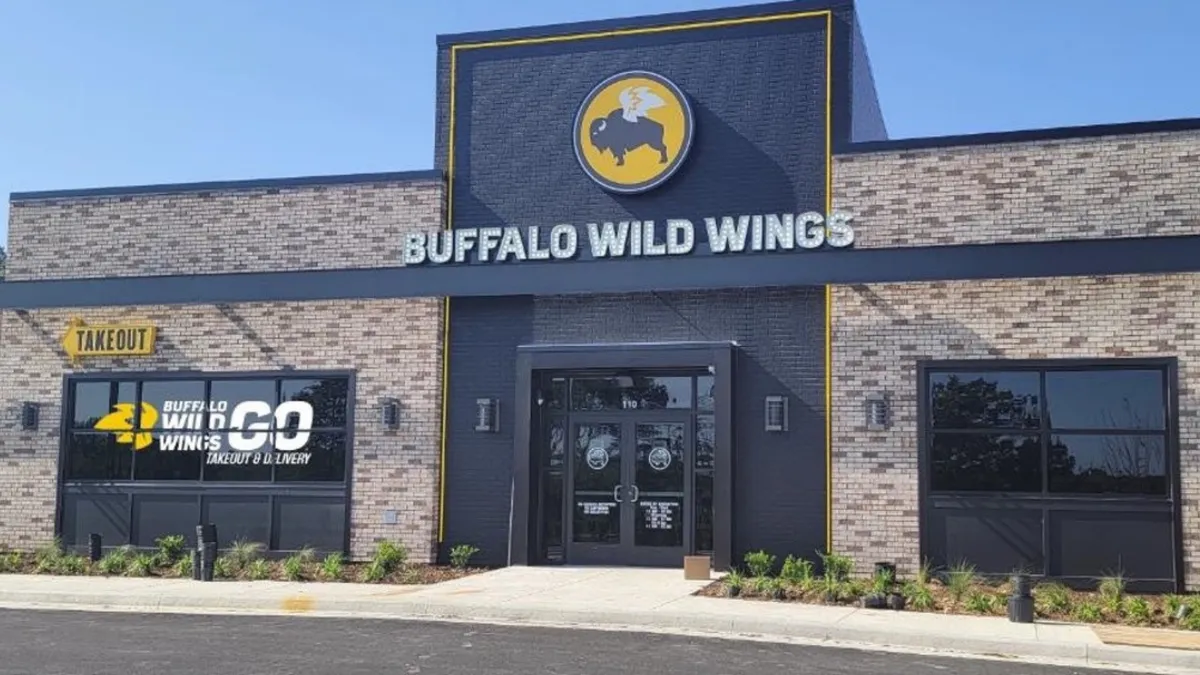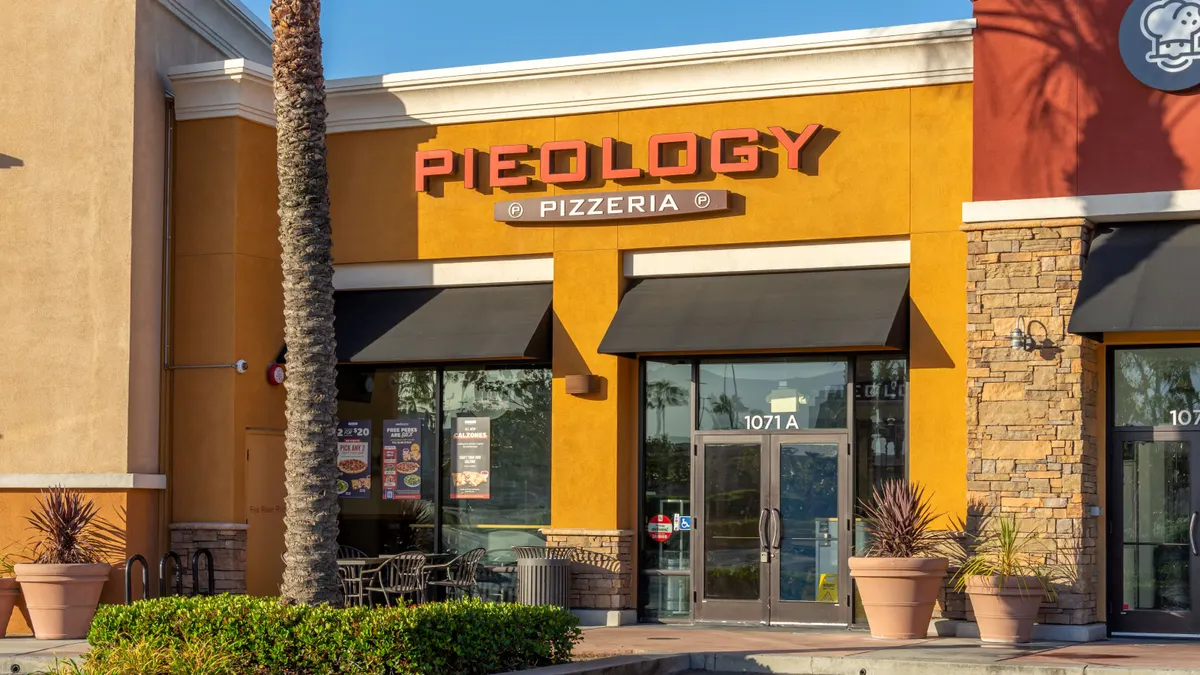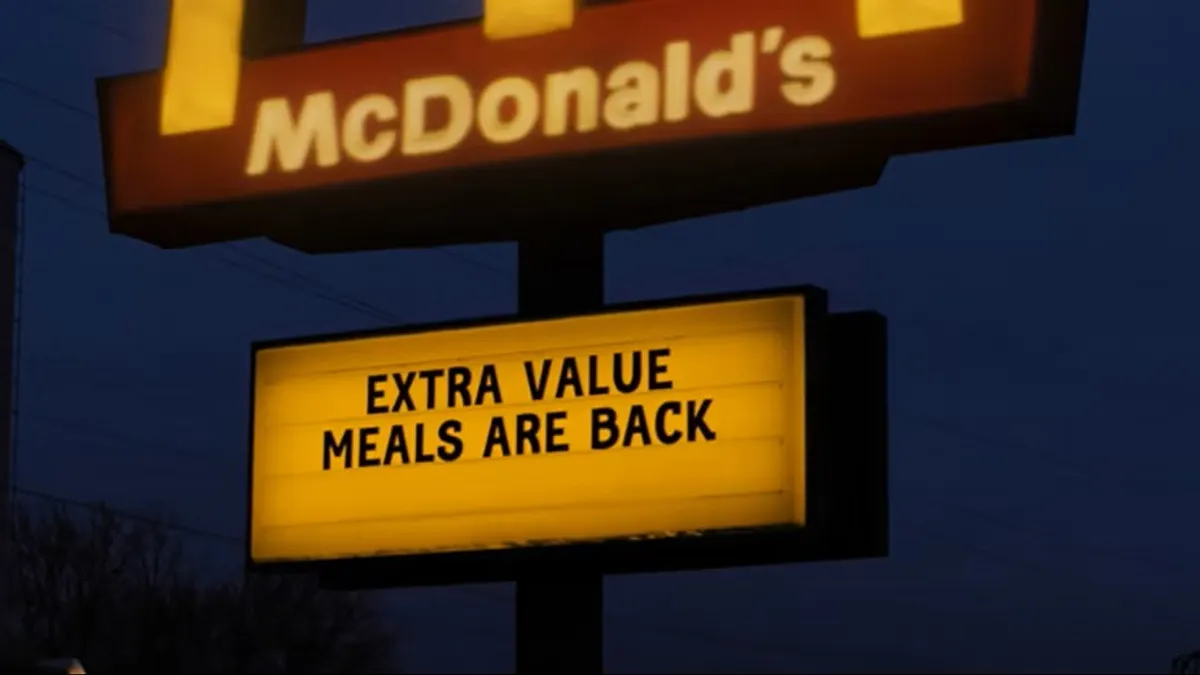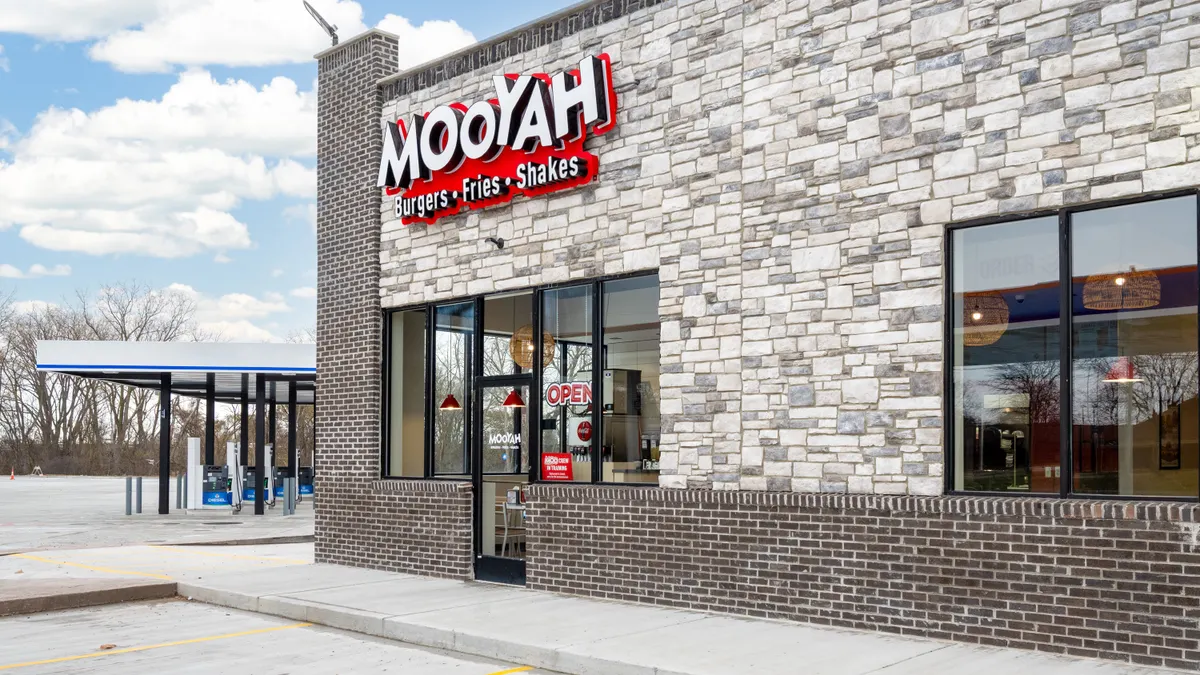Editor’s note: This article is part of an ongoing franchise series, which highlights brands that are new to or aggressively expanding via franchising. Is your restaurant starting to franchise? Email us at [email protected].
Golden Corral did what many buffet chains could not during the COVID-19 pandemic: it survived. During a time that marked the end of Souplantation’s parent company and bankruptcies from buffet chains Fresh Acquisitions and Cicis, Golden Corral hung on. The company plans to be around for at least 100 years.
Making sure the brand survived meant working closely with franchisees to decide how to adapt, said David Conklin, Golden Corral chief development officer. During the pandemic, the chain temporarily switched to cafeteria family-style service, in which staff served patrons from the buffet, and worked closely with local governments to demonstrate that the restaurant’s health policies exceeded local standards. Some of the changes, which were developed by franchisees, included using gloves at the bars and adding queuing rails around the bars to limit the number of customers, Conklin said.
“The pandemic has taught us that we need to continue to do that work with our franchisees, that we need to be innovative,” Conklin said.
When the first Golden Corral opened in 1973 in Fayetteville, North Carolina, it was a family steakhouse. The concept grew over the next 10 years, primarily in smaller cities in the South and Southeast, and reached Texas, Conklin said. At the time, the concept was in smaller buildings, each about 4,000 to 5,000 square feet.
The company shifted direction in the 1980s, moving away from its steakhouse roots, to become a buffet and grill. Customers wanted more buffet elements and competitors were adding things like salad bars in response, he said. Golden Corral started building larger restaurants at about 11,000 square feet, which could seat 400 people. Golden Corral then started franchising in 1986, gaining momentum in 1991, Conklin said. The chain has since grown to over 350 units across about 40 states and Puerto Rico.
Now, with dining room routines returning to normal, customers have come back to buffets in droves. Visits to the top U.S. buffet chains — Golden Corral, Cicis and Pizza Ranch — were up 125% in March compared to January 2021, according to Placer.ai data. Golden Corral’s sales were up 14% in 2022 compared to pre-pandemic.
“For Golden Corral, it’s really been a terrific value proposition for us being all-you-can-eat,” Conklin said. “We’ve got this sweet spot for pricing that really thrives during times of economic uncertainty or inflation.”
This traffic bump is attracting renewed interest from franchisees, and existing Golden Corral operators are signing up for new locations, too. One franchisee that started with a single Golden Corral location pre-pandemic grew to nine such units three years later, and plans to develop two more, Conklin said.
To help franchisees combat growing operations costs, Golden Corral rolled out a franchise incentive program in July 2022. While other programs offer discounted royalty fees, Golden Corral’s incentive offers cash credits to go toward approved foodservice supplier accounts for 3% of sales in year one, 2% in year two and 1% in year three. The chain will also reimburse training costs for three managers up to $15,000 each, and provide a $5,000 marketing reimbursement for new restaurant openings.
“Golden Corral is cutting a check back to their foodservice supplier to help pay for their food and reduce their costs and help with inflation,” Conklin said. “We saw this as an opportunity to fight inflation, help with new store growth and help build that pipeline.”
The chain offers a wide variety of real estate options, from its 11,000-square-foot, freestanding location, to smaller inline units, travel center and mall locations. Its freestanding “Gateway” design is a redesign from 2018, which includes a dining room that is 1,000 square feet larger that features a fireplace. This model also has more separation between the dining room and buffet and more space around tables, allowing for a quieter dining area. The Gateway 11M design tends to be 11,000 square feet and is ideal for larger markets, while the Gateway 11F design tends to be about 8,000 square feet and is meant for smaller markets. Inline locations depend on the size of the market, but tend to follow the Gateway design, including the stacked stone aesthetic.
With so many buffet locations closing, Golden Corral franchisees have had more opportunities for cheap conversions, refurbishing restaurants with a new kitchen layout and the standard Golden Corral look. About half of the deals franchisees are working on have been conversions, Conklin said.
“As these opportunities come up, our franchisees have jumped on [them] and really done a great job with it,” Conklin said.

Training and support: Before prospective franchisees sign up for a Golden Corral, they meet with the company’s CEO and the rest of the leadership team, all of whom answer any questions the operator may have. They also meet with each department to gain a better understanding of the support they will receive. This helps the franchisee and Golden Corral know if the two are a good fit for each other, Conklin said. After they become a franchisee, operators receive a “rigorous introduction and training,” he said. Golden Corral, which previously offered 13 weeks of training, shortened it to eight weeks this year with the addition of some online training alongside in-person instruction. Corporate also sends what it calls its “A-team” to each store during the first few weeks of opening to help train staff in-store.
For development support, corporate employees will go into each market and walk the operator through the tools and resources available to them, from cell phone data to demographics and traffic counts, that will help them get a store open. The company also offers extensive marketing support, including a national advertising campaign.
Development plans: The buffet chain has nearly 300 markets available for franchisees across the country, Conklin said. It is currently working on building its development pipeline and didn’t have a specific number of future units to share. The chain tends to grow at a rate of about 15 stores per year, because its large-format restaurants tend to attract operators that add one store at a time, Conklin said.
Ideal franchisees: Golden Corral looks for operators with restaurant experience, particularly two to three years at sit-down restaurants, and strong business acumen, Conklin said. The chain prefers franchisees who live in their markets and want to give back to their communities.



